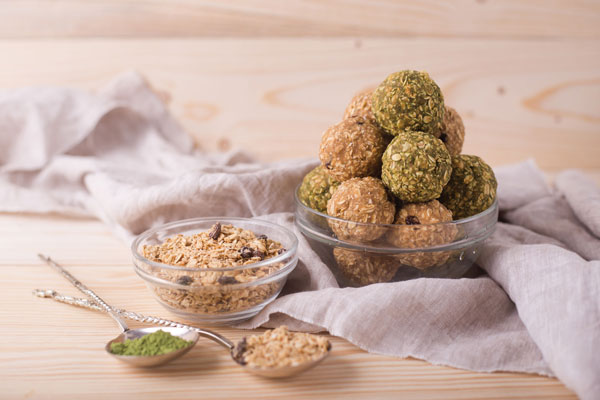Bite-Size Nutrition Tips for Cancer Survivors
4 Things You Can Do to Get the Nutrition You Need When Your Appetite Is Low
by Mary-Eve Brown, RDN, CSO, LDN
Good nutrition is vital for cancer survivors. A healthy diet can help you feel better and stay stronger. However, it’s not always easy to get enough nutrition during cancer treatment. Side effects can affect your appetite and your ability to eat. These bite-size tips can help you get the nutrition you need, even when your appetite is low.
1. Think small and frequent.
Instead of three large meals a day, try eating six small meals. Aim to eat a small meal or snack every two to three hours. Try to limit your fluid intake during meals and focus on eating solid foods instead. This way, you won’t fill up on liquids during mealtime and will be able to eat more. Opt for nutrient-rich foods that pack calories and protein in small portions. Some ideas are eggs, tuna, trail mix, hummus, avocado, nut butters, yogurt, cheese, and beans.
2. Drink up.
All caffeine- and alcohol-free beverages count toward hydration. To maximize their nutritional impact, choose beverages that offer both hydration and nutrition. Water is good, but it has no nutrients. Instead, try drinking vegetable juice, smoothies, shakes, protein drinks, milk, and soups.
Instead of three large meals a day, try eating six small meals.
3. Choose easy to chew.
When your desire to eat is low, having to really chew your food can make eating feel like work. Choosing foods that are easy to chew and swallow can help you eat more, as they require less energy to consume. Some ideas you can try are hot cereals, soups, stews, egg dishes, yogurt, mashed vegetables (like sweet potato, winter squash, and carrots), hummus, cottage cheese, and casseroles.
4. Add a little something to everything.
Adding calories and protein to your meals can help you get more nutrients without increasing the amount you have to eat. Healthy fats are very nutrient dense. Just one serving can give you 100 healthy calories. An effortless way to include healthy fats in your diet is to add healthy oils to the foods you are already consuming. For example, you can stir vegetable oils into soups or add them to just about any meal during cooking. Another trick to ensuring you get the calories you need is to add protein (like nuts, seeds, or beans) to your meals and snacks. Add beans to soups and stews; toss some nuts into your salad, oatmeal, or cereal; or top a serving of yogurt with pumpkin seeds.
These tips are a great place to start if you have low appetite or difficulty eating during cancer treatment. However, if you are experiencing barriers to getting the nutrition you need during treatment, you may want to consider working with a registered dietitian. A dietitian can help you develop a personalized nutrition care plan to meet your individual needs.
Energy Balls
Ingredients
- 1 tbsp instant dry milk powder
- 1 tbsp honey
- 1 tsp water
- 5 tbsp peanut butter
- 1 tsp vanilla
Recipe yields: 6 tablespoons
Serving size: 3 tablespoons
Directions
- Combine milk powder, water, and vanilla.
- Add honey and peanut butter slowly until all the liquid blends into the peanut butter.
- Form into balls and chill.
279 calories and 11 grams protein per serving
Alternatives
- If you don’t like peanut butter or are allergic, substitute another nut butter, such as almond butter.
- Instead of forming into balls, use mixture as a spread, a dip, or a topping.
- For variety, add rolled oats, dried fruit, dark chocolate, or warm spices like cinnamon to the mixture.

Mary-Eve Brown, RDN, CSO, LDN has been a registered dietitian nutritionist with the Academy of Nutrition and Dietetics for more than 30 years. She is also a board-certified specialist in oncology with the Academy, and has been an outpatient oncology dietitian at the Johns Hopkins Sidney Kimmel Comprehensive Cancer Center in Baltimore, MD, for more than 19 years.
This article was published in Coping® with Cancer magazine, March/April 2021.


